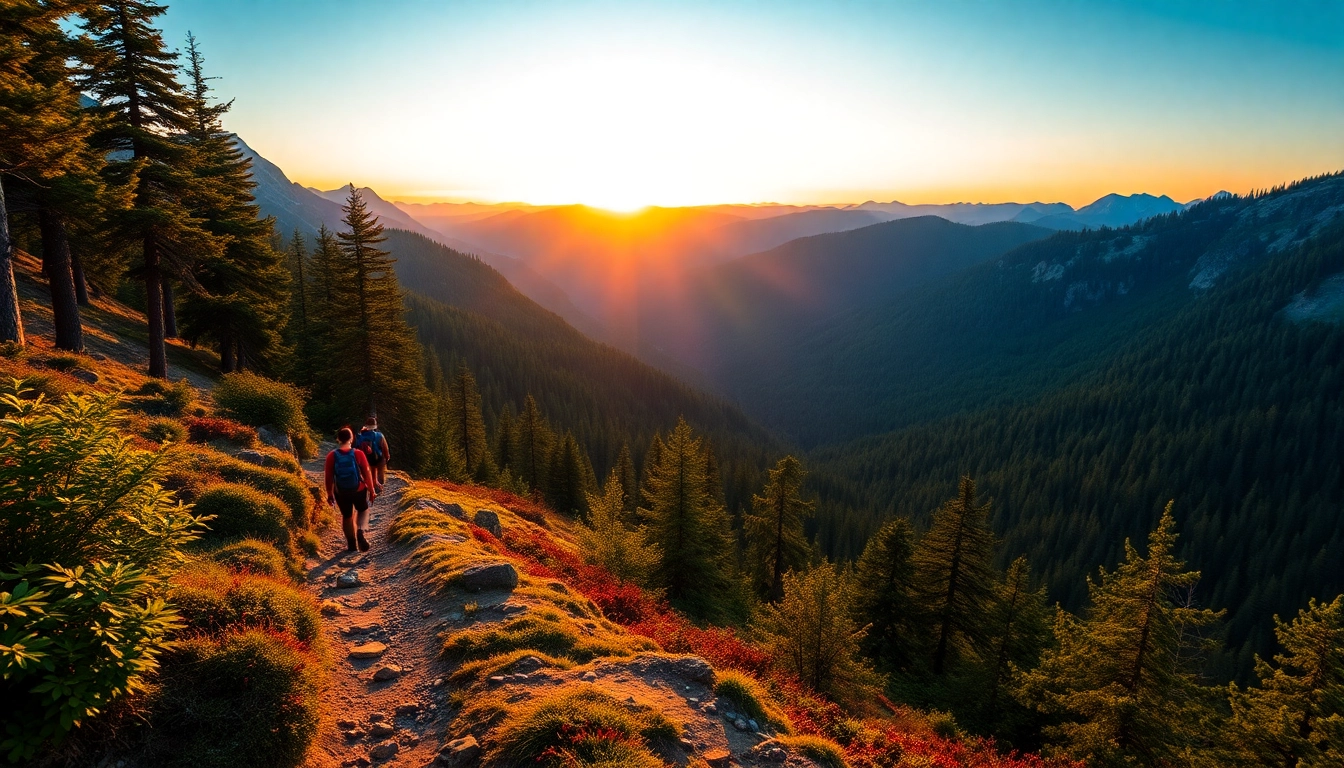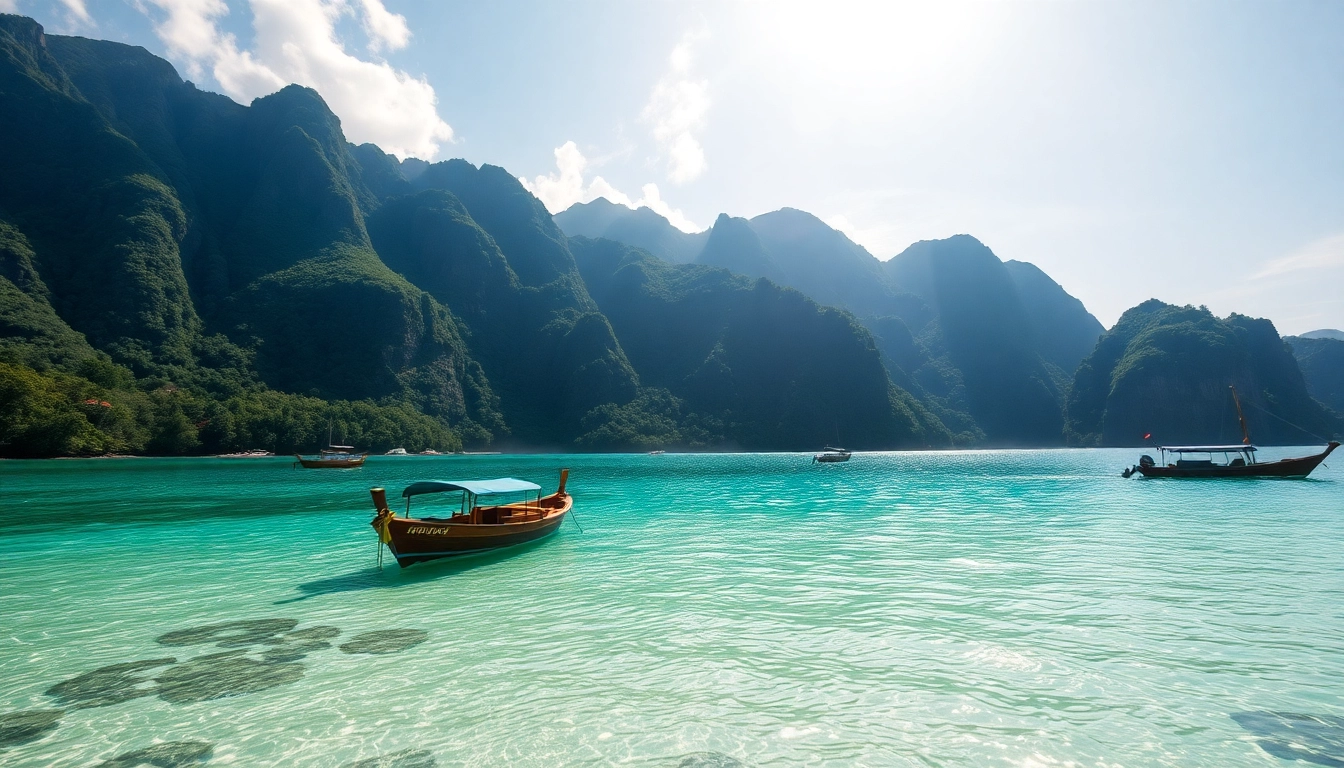Understanding What Makes a Great Hike: Basics and Benefits
Embarking on a hike is more than just a walk through the wilderness; it’s a journey into nature that offers numerous physical, mental, and emotional benefits. Whether you’re an experienced trekker or a beginner eager to explore, understanding the core principles behind a successful hike can transform your outdoor experience into a rewarding adventure. The term hike typically denotes a long, vigorous walk, often in scenic or rural environments, designed for pleasure, exercise, or exploration. As you step onto nature’s trail, you engage with a fulfilling activity rooted in the timeless pursuit of connection with the natural world.
Defining a hike and its core characteristics
Fundamentally, a hike is a deliberate and sustained walk through natural terrain. Unlike casual walks or strolls, hikes often cover significant distances and traverse diverse landscapes, including mountains, forests, or rocky trails. This activity hinges on several characteristics:
- Distance and Duration: Hikes can vary from short excursions of a couple of kilometers to extensive multi-day trekking adventures spanning dozens or hundreds of kilometers.
- Terrain Diversity: Hikes often involve uneven, challenging, or rugged terrain, requiring adaptability and resilience.
- Purpose: While recreational hiking aims for enjoyment and relaxation, it may also serve for fitness, environmental education, or cultural exploration.
- Preparation and Planning: Successful hikes demand route planning, understanding trail conditions, and suitable gear.
Health and mental benefits of regular hiking activities
Engaging in regular hikes confers unmatched health benefits. Physically, hiking enhances cardiovascular health, builds muscle strength, improves endurance, and aids in weight management. A study published in the Journal of Physical Activity & Health indicated that walking in natural settings can reduce blood pressure and lower cholesterol levels. Mentally, hiking has been shown to reduce stress, combat anxiety, and bolster mood due to exposure to natural environments often described as “green therapy.” The rhythmic movement and fresh air stimulate endorphin release, fostering a sense of well-being and mental clarity. Additionally, hiking encourages mindfulness and present-moment awareness, which can be especially rejuvenating amidst nature.
Different types of hikes for various experience levels
The hiking landscape offers options suited for all skill levels:
- Leisurely Day Hikes: Short, well-marked trails, perfect for beginners or families, often in national parks or botanical gardens.
- Backcountry Hikes: Longer, more remote routes that require outdoor skills and possibly overnight camping, suited for intermediate hikers.
- Mountain/Peak Climbs: Challenging ascents demanding technical skills, suitable for experienced adventurers seeking a sense of conquest.
- Trekking Tours: Multi-day journeys through wilderness or mountain ranges, often with guided support, ideal for seasoned hikers ready for extended adventures.
Essential Gear and Preparation for a Successful Hike
Choosing the right hiking shoes and apparel
The foundation of any successful hike lies in appropriate footwear and clothing. Quality hiking shoes or boots provide ankle support, tread grip, and durability—reducing the risk of injury on uneven terrain. It’s crucial to select footwear suited to the hike’s difficulty and weather conditions. Breathable, moisture-wicking apparel ensures comfort, while layered clothing allows adaptation to temperature fluctuations. For tropical regions like Indonesia, lightweight, quick-drying fabrics with UV protection are recommended. Remember, proper gear not only enhances performance but also significantly impacts safety.
Must-have equipment and safety essentials
Besides footwear and clothing, essential gear includes a navigation tool (like a GPS device or map and compass), sufficient water and high-energy snacks, a first aid kit, and weather protection items such as hats and rain jackets. A headlamp or flashlight is vital for late return or emergencies. Carrying a multi-tool, insect repellent, and sunscreen further ensures preparedness against environmental factors. For remote or long hikes, an emergency shelter, extra clothing, and a communication device such as a fully charged portable power bank or satellite phone can be lifesaving.
Planning routes and assessing trail difficulty
Successful hikes stem from meticulous planning. Use reputable sources, local parks, or online platforms to gather trail information. Consider trail length, elevation gain, surface conditions, and potential hazards. Most guides provide difficulty ratings—easy, moderate, or hard—helping you match the trail to your fitness level and experience. Check recent trail condition reports and weather forecasts, especially in mountain or coastal regions prone to sudden changes. Pre-hike preparation includes informing someone about your plans, packing safety equipment, and knowing the locations of emergency services.
Finding and Selecting the Best Hiking Trails in Indonesia
Top popular hiking spots across Lombok and beyond
Indonesia, with its diverse geography and stunning landscapes, offers some of the world’s most captivating hiking destinations. In Lombok, Mount Rinjani stands out as the second-highest volcano in Indonesia, drawing adventure seekers with its challenging slopes and breathtaking crater lake views. Other notable spots include Mount Tambora, with its historic eruption site, and the lush trails of Sindang Gila in West Java. Beyond Lombok, Bali’s Mount Batur offers accessible sunrise hikes, and Komodo Island provides unique trekking experiences with its famed dragons.
How to evaluate trail conditions and accessibility
Evaluating trail conditions involves researching recent reports on trail accessibility, weather, and maintenance. Many national parks and tour providers publish updates or reviews. Accessibility varies based on infrastructure; some trails require permits or guided arrangements. For remote or less-developed trails, consider hiring local guides or joining organized tours that provide up-to-date insights on trail safety and accessibility. Variability in trail conditions highlights the importance of flexible planning and readiness for unexpected challenges like muddy paths, loose rocks, or sudden weather shifts.
Tips for discovering hidden gems and local trails
While popular spots attract numerous hikers, Indonesia’s lesser-known trails offer authentic and serene experiences. Use local contacts, community forums, or eco-tourism initiatives to find these hidden gems. Engaging with local guides not only enriches your knowledge of the area but also supports sustainable tourism. Visiting less crowded trails requires a spirit of adventure and respect for the environment. Remote trails often demand higher levels of preparation but reward hikers with pristine landscapes, fewer crowds, and deeper cultural immersion.
Hiking Techniques and Tips for All Skill Levels
Proper hiking posture and pace management
Maintaining proper posture enhances endurance and reduces fatigue. Keep your back straight, shoulders relaxed, and gaze ahead—not down at your feet. Use a comfortable, steady pace that allows for regular breathing and conversation. For long-distance hikes, adopting a rhythmized pace conserves energy. Listen to your body’s signals, and avoid rushing uphill or overexerting yourself early on.
Managing nutrition and hydration on long hikes
Hydration is critical—consume water regularly, even before feeling thirsty, to prevent dehydration. Use lightweight water bottles or hydration reservoirs. Nutrition-wise, carry high-calorie, easy-to-carry foods like nuts, energy bars, dried fruits, and trail mix. Eating small amounts frequently sustains energy levels. For multi-day hikes, plan meals that are nutritious yet lightweight, and consider seasoning or flavoring to improve appetite and morale during tough sections.
Leave No Trace principles for environmentally responsible hiking
Respect for nature ensures future generations can enjoy equally pristine environments. Follow the Leave No Trace principles: pack out all trash, stay on designated trails, avoid disturbing wildlife, and minimize campfire impacts. Use biodegradable products and refrain from picking plants or collecting artifacts. Being mindful of your ecological footprint preserves the natural beauty and biodiversity of Indonesia’s diverse ecosystems.
Enhancing Your Hiking Experience: Apps, Groups, and Community
Using apps for trail mapping and weather updates
Modern technology enhances safety and planning. Trail mapping apps like AllTrails or MapMyHike offer detailed route information, user reviews, and GPS navigation. Weather apps provide real-time updates, crucial for avoiding sudden storms or extreme heat. Offline maps and GPS devices are invaluable in remote areas with limited connectivity. Staying informed allows you to adapt plans dynamically and ensure a safer, more enjoyable hike.
Joining local hiking groups and guided tours
Connecting with local groups fosters camaraderie and cultural exchange. Many communities in Indonesia organize group hikes that cater to various skill levels, often led by experienced guides familiar with the terrain. Guided tours may include cultural insights, ecological education, and logistical support, reducing planning stress and increasing safety. It’s an excellent way for newcomers to learn local customs and trail etiquette while building lasting friendships.
Sharing experiences and building a hiking community in Indonesia
Sharing stories, photos, and tips through social media or community forums enriches the hiking culture. Participating in local events, cleanup drives, or eco-projects promotes sustainable tourism and environmental awareness. Developing a vibrant hiking community creates a support network for beginners and seasoned explorers alike, ensuring the activity continues to grow responsibly and inclusively across Indonesia’s diverse landscapes.

